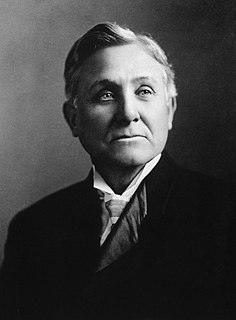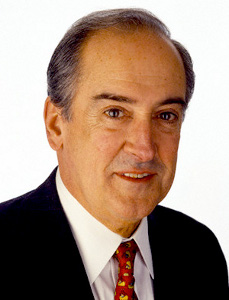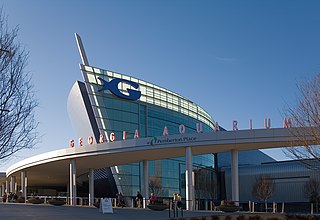
Asa Griggs Candler was an American business tycoon and politician who in 1888 purchased the Coca-Cola recipe for $238.98 from chemist John Stith Pemberton in Atlanta, Georgia. Candler founded The Coca-Cola Company in 1892 and developed it as a major company.

Roberto Críspulo Goizueta Cantera was a Cuban-born American business executive who served as the chairman, director, and Chief Executive Officer (CEO) of The Coca-Cola Company from August 1980 until his death in October 1997.

SunTrust Banks, Inc. was an American bank holding company with SunTrust Bank as its largest subsidiary and assets of US$199 billion as of March 31, 2018. The bank's most direct corporate parent was established in 1891 in Atlanta, where it was headquartered.

The World of Coca-Cola is a museum, located in Atlanta, Georgia, showcasing the history of the Coca-Cola Company. The 20-acre (81,000 m2) complex opened to the public on May 24, 2007, relocating from and replacing the original exhibit, which was founded in 1990 in Underground Atlanta. There are various similar World of Coca-Cola stores in locations such as Las Vegas and Disney Springs.

The Miami Biltmore Hotel is a luxury hotel in Coral Gables, Florida. The hotel as designed by Schultze and Weaver and was built in 1926 by John McEntee Bowman and George Merrick as part of the Biltmore hotel chain. The tower is inspired by the Giralda, the medieval tower of the cathedral of Seville.
George Russell Wackenhut, was the founder of the Wackenhut private security corporation.

George Edgar Merrick was a real estate developer who is best known as the planner and builder of the city of Coral Gables, Florida in the 1920s, one of the first major planned communities in the United States.

Red Road, also known as West 57th Avenue, is a 20.6-mile (33.2 km) main north-south street running west of downtown Miami in Miami-Dade County, Florida and into Broward County. Red Road is signed as State Road 959 from U.S. 1 to the south end of the Miami International Airport, and State Road 823 from U.S. 27 to the Broward County line.
Schultze & Weaver was an architecture firm established in New York City in 1921. The partners were Leonard Schultze and S. Fullerton Weaver.
W. Allen Morris is Chairman and CEO of the Allen Morris Company and a real estate developer and Realtor in the state of Florida.

Jeffery Scott Swanagan was an American director of several major aquariums and zoos in the United States, including the Florida Aquarium, Zoo Atlanta, the Georgia Aquarium and the Columbus Zoo and Aquarium. He was the founding executive director and president of the Georgia Aquarium and is credited much of the aquarium's creation and design.

Humberto Calzada is a Cuban-American artist living in Miami, Florida, since 1960.
Charles Forrest Palmer was an Atlanta real estate developer who became an expert on public housing and organized the building of Techwood Homes, the first public housing project in the United States. He would later head up both the newly created Atlanta Housing Authority and the Chamber of Commerce.

Miami-Dade County Public Schools (M-DCPS) is a public school district serving Miami-Dade County, in the U.S. state of Florida. Founded in 1885, it is the largest school district in Florida and the Southeastern United States, and, as of 2020, the fourth largest in the United States, with a student enrollment of 356,086 as of August 30, 2017.

Francis Palmer Smith was an architect active in Atlanta and elsewhere in the Southeastern United States. He was the director of the Georgia Tech College of Architecture from 1909–1922.

William H. Kerdyk Jr. is an American entrepreneur, politician, international golf tournament organizer and real estate investor.

Albert Hammond Staton was a college football and basketball player for the Georgia Tech Yellow Jackets of the Georgia Institute of Technology, and a Coca Cola executive in Colombia.

Lindsey Hopkins Jr. was born in Greensboro, North Carolina. He built a career in commercial and industrial banking, owning homes in Miami and Atlanta, where he had close ties to Coca-Cola. He also owned a chain of hotels in the Bahamas.

Alfred F. Schimek (1897-1980) was an architect active in Illinois and South Florida during the early and mid-20th century. He was responsible for notable projects in each region over the course of his career spanning five decades and is known primarily for his residential architecture work. His designs are associated mostly with updated interpretations of traditional European styles, such as Mediterranean Revival, though he also designed in the contemporary Bauhaus-influenced Modernist Art Deco style. Schimek also served in the board leadership of organizations in each region including the Illinois Society of Architects and the Greater Miami Civic Theater. As an inventor Schimek filed US patents for spring suspension systems and original door mounting designs.

















